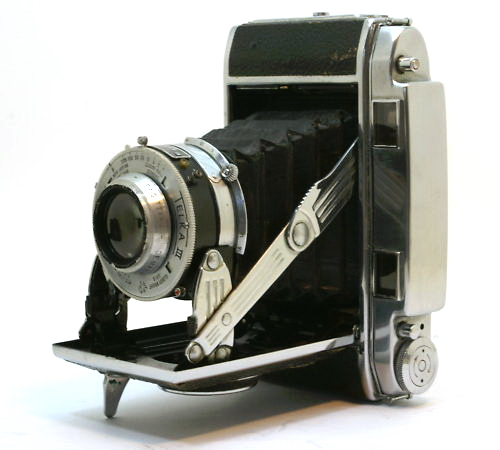I have a couple of 6x6 folders which I use and enjoy form time to time.I am thinking of buying a 6x9 folder to try the different format,and was wondering if the 105mm lens and the wider negatives imply that there is in fact a wide angle element to the format.Any comments would be welcomed.
Cheers from Wales🙂
Brian.
I'd advice against it.
I suffered a lot looking for a good folder.
I had a Zeiss Nettar 6x6 - it gave acceptable pictures but corners were not so good, so they did not justify spending more money on film (versus 35mm).
Then i got the Ensign Selfix 620 with the Ross Xpres lens, supposedly one of the best folders. The Xpres never gave me a flat image unless at f11 or f16; either the center was extremely sharp and the edges and corners unsharp, or the corners were acceptable and the center not acceptable...
Mind you, all these cameras I serviced and calibrated for infinity focus!!
Film flatness problems are always mentioned with 6x9 folders and it's possible that this was happening on the Selfix.
Moving to the Agfa Record III, mine had a problem where the "kick" of the Synchro-Compur shutter moved the focus ring, blurring the images. This because the focus ring requires a strong grease and mine had a light grease. Holding the focus ring still the problem was gone, the lens was sharp but not so sharp as to justify using the 6x9 format with only 8 exposures per roll.
(Note: My reference is the images produced by my Mamiya RB67, which at 6x7 can give an image quality that resembles large format)
Then I found a Voigtlander Bessa II with the Skopar lens but on careful inspection, the front lens standard was flimsy, which I find unacceptable. Forums indicate that this is a common problem, AND that while the lens is great, the results on film are not great due to film flatness design issues.
Another serious problem with 6x9 is that the depth of field is way too narrow for scale focusing, so you are stuck with folders that have rangefinders, or with having to stop down to f16 or even more.
So i've given up on 6x9 folders.
On the other hand, i have a 6x4.5 folder, the "Zenobia", this one gives perfect results sharp corner-to-corner, and of course has more DOF due to the smaller format. I've kept the Zenobia, it is a great little camera.






